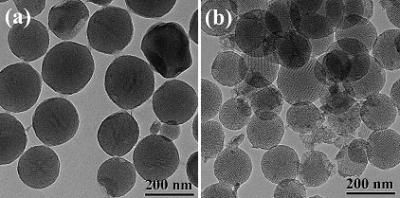Nanotechnology Makes Packaging Intelligent, Smart and Safe
According to a new market study developed by Helmut Kaiser Consultancy nanotechnology has been significantly increasing its impact on the food and beverage packaging industry during last three years. The sales of the nano-related packaging products have been rising from US$ 150 million in 2002 to $ 860 million in 2004 worldwide. Nonetheless, compared with the over $100 billion food and beverage packaging industry, the growth potential of the nanopackaging is still enormous. It is predicted that nanotechnology will change 25% of the food packaging business in the next decade, that means a yearly over $ 30 billion market. The packaging will become more and more a service and try to meet as many customers' requirements as possible. Simple traditional 'packing' is to be replaced with multi-functional intelligent methods to improve the food quality.
The rocketing market growth comes mainly from the rapid multiplication of the applications employing nanotechnology. While there were less than 40 nanopackaging products in the market three years ago, this number has been going beyond 250 today. Present major market trends include enhancing the performance of packaging materials, prolonging shelf life, antimicrobial packaging and interactive packaging.
Nanotechnology enables the designers to alter the structure of the materials on the molecular scale, to give the materials desired properties. With different nanostructure, the plastics can obtain various gas/water vapor permeabilities to fit the requirements of reserving fruit, vegetable, beverage, wine and other food. By adding nanoparticles, people can also produce bottles and packages with more light and fire resistantance, stronger mechanical and thermal performance, and less gas absorption. These properties can significantly increase the shelf life, efficiently preserve flavour & colour, and facilitate transportion & usage. Further, nanostructured film can effectively prevent the food from the invasion of bacteria and microorganism and ensure the food safety. With embedded nanosensors in the packaging, consumers will be able to 'read' the food inside. Sensors can alarm us before the food goes rotten or can inform us the exact nutrition status contained in the contents.
In the long run, nanotechnology is going to change the fabrication of the whole packaging industry. Processing the atoms and molecules will realize zero-emission recycle and save natural resources. Self-assembly will in the end hugely reduce the fabrication costs and infrastructure. More flexible packaging methods will provide the consumers with fresher and customized products.
Nanopackaging has attracted the attention of industrial leaders, governments and research institutes. Multi-national companies, such as Krafts, Henkel, Bayer, Kodak, Budweiser, Pepsi, to name just a few, all have their R&D projects concerning the application of nanotechnology in the field of food & beverage packaging. NASA, US Department of Defense and leading European institutes show their special interests in the related segments as well. It is worthy of noticing that China and Taiwan have already taken a firm foothold in this market and are poised to be challenging competitors in this market.
The study 'Nanopackaging 2005-2010-2015', developed by Helmut Kaiser Consultancy, is based on constant market watch, broad surveys and interviews during last three years. The study includes analysis of the market development up to 2015 by countries and by market segments, detailed listing of the present and potential market applications, and description of the state of science and the technology trends, together with a list of related patents. Governmental strategy & support, ethical & social issues are parts of the study as well. A comprehensive collection of the competitors and their activities enables the readers to get insight of what is happening in every company and every country.
Other news from the department business & finance
These products might interest you
Most read news
More news from our other portals
See the theme worlds for related content
Topic world Sensor technology
Sensor technology has revolutionized the chemical industry by providing accurate, timely and reliable data across a wide range of processes. From monitoring critical parameters in production lines to early detection of potential malfunctions or hazards, sensors are the silent sentinels that ensure quality, efficiency and safety.

Topic world Sensor technology
Sensor technology has revolutionized the chemical industry by providing accurate, timely and reliable data across a wide range of processes. From monitoring critical parameters in production lines to early detection of potential malfunctions or hazards, sensors are the silent sentinels that ensure quality, efficiency and safety.





























































